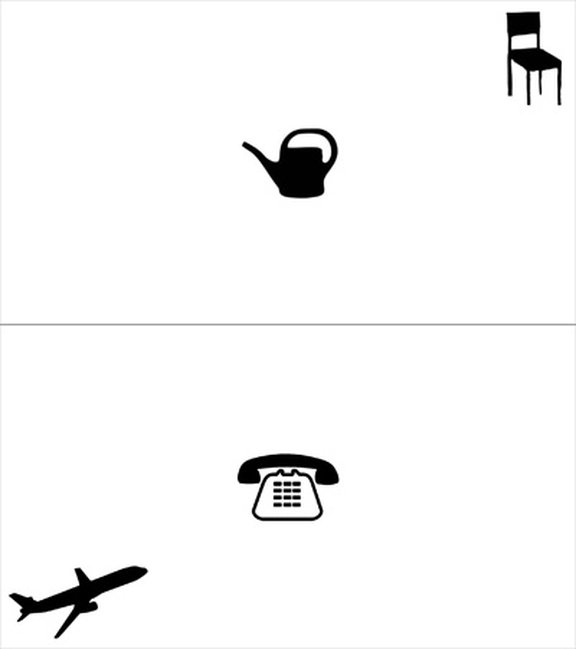People who have the tendency to let their eyes wander will most likely also do so when they walk through a supermarket and they will often purchase more than initially planned. These are the results of a study conducted by consumer behavior researcher Mathias Streicher and his colleagues Oliver Büttner (University of Duisburg-Essen) and Zachary Estes (Bocconi University, Milan). “We studied the role of visual attention in making unplanned purchases. Several marketing studies suggest that unplanned purchases increase when shoppers see more products. We have now been able to show that also the shoppers’ individual scope of attention plays a major role in this behavior,” explains Streicher.
Attention types
The researchers distinguish between two attention types that focus their attention on different aspects: People with a narrow scope of attention focus on things that are directly in front of them; in the supermarket they tend to focus on the center of the shelf. Individuals with a broad scope of attention are more easily distracted, their eyes wander and they are more susceptible to their direct surroundings. “In general, every person tends to be one or the other type but it also depends on the situation,” says the consumer researcher. Using the supermarket as an example, having a shopping list in your hands leads to an implementation-focused mindset, attention narrows and the shopper is more focused.
It is possible, however, to prime a person for a short period of time with a broad or narrow scope of attention through a simple visual task without the person noticing (for an explanation of priming see below): “At a supermarket in Innsbruck, we asked shoppers if they would like to participate in a study. We then primed one group with a narrow and another group with a broad scope of attention. We were quite surprised by the results: Shoppers primed with a broad scope of attention left the supermarket with significantly more unplanned purchases than shoppers primed with a narrow scope of attention.” While, on average, participants primed with a narrow scope of attention spent about 6 Euro for unplanned purchases, shoppers primed with a broad scope of attention spent 11 Euro – that is almost the double. “We repeated the study twice and the results were always the same.” During the third study the researchers used advertising material that induced the attentional manipulation and handed out pedometers: “The group primed with a broad scope of attention, again, spent more money on unplanned purchases, stayed in the supermarket longer and walked longer distances than the group primed with a narrow scope of attention.”
Apart from the field study, the researchers also carried out three different experiments in the laboratory: Students received eye-tracking glasses and were sent to a market. The eye-tracking showed that the group primed with a narrow scope of attention looked mostly at the shelf center while the participants primed with a broad scope of attention also fixated on the periphery of the shelves. In two other experiments the participants had to mark products they would like to buy by mouse click on a picture or they had to memorize products – again the clicking behavior clearly reflected the priming type.
Implications
The results of the study might be relevant for the treatment of compulsive disorders, explains Streicher: “For the majority of people unplanned purchases are quite normal and not problematic. For people with compulsive buying disorder this behavior can threaten their livelihood. With our results suggesting that each individual’s scope of attention plays an important part in shopping behavior, therapies could be developed to help control attention and, thus, unplanned spending.” However, also supermarkets may react and modify their marketing in a way to induce a broader scope of attention in shoppers – thus, using our findings for marketing and, ultimately, increasing sales. “To us it was important to simply show this mechanisms. One’s own scope of attention plays a major part in unplanned purchases, more so than one would assume intuitively. Consumers have to be aware of this fact,” says Streicher.
The field study
Before entering the supermarket, the participants were manipulated to be either broadly or narrowly focused: On 20 slides, one group had to name one object presented in quick succession in the center, a second group had to name the object in one of the corners (see pictures). In this way, the visual attention was guided towards the center (first group) or the periphery (second group) of the visual field. In addition, before sending them into the supermarket, the participants were asked what they intended to buy. The group primed with a broad scope of attention left the supermarket with significantly more unplanned purchases than the group that was primed with a narrow scope of attention. This field study was repeated three times with about 100 participants in each study. The results were confirmed in all studies. In the third study the participants saw real products on the slides instead of random objects and they received a pedometer to take with them. The results: The shoppers primed with a broad scope of attention spent more money, walked longer distances and spent more time shopping than the other group. Apart from the field study, the researchers carried out experiments in a laboratory with a total of 300 persons participating – all findings were replicated.


